Introduction
Garlic cloves, a staple in kitchens across the globe, has transformed countless dishes with its distinct aroma and savory flavor. However, hidden beneath its culinary excellence are a variety of health advantages that have been revered for ages. This guide aims to unveil the wonders hidden within each garlic clove, from its rich history to its modern-day applications in both the kitchen and the field of health.

What is a Garlic Clove?
A garlic bulb, commonly recognized for its layered white exterior, is composed of individual segments called cloves. Each clove is encased in a thin, papery layer, preserving its moist, dense inner flesh. It’s this flesh that’s often minced, chopped, or used whole in recipes and health remedies.
When one mentions the term “garlic,” it typically refers to the whole bulb. However, when recipes or health guidelines specify a “garlic clove,” they’re pinpointing just one of these individual segments. Depending on the garlic variety and its growth conditions, a single bulb can contain anywhere from 10 to 20 cloves.

The Nutritional Composition of Garlic
Garlic isn’t just a flavor powerhouse; it’s also brimming with essential nutrients that contribute to its widely recognized health benefits. Let’s delve into the nutritional makeup of this remarkable bulb.
- Vitamins: Garlic is a rich source of Vitamin C, Vitamin B6, and Folate. These vitamins play a pivotal role in immune function, metabolism, and red blood cell formation.
- Minerals: Key minerals found in garlic include manganese, selenium, calcium, potassium, and iron. These minerals are essential for bone health, antioxidant defense, muscle function, and transporting oxygen in our blood.
- Phytonutrients: Garlic contains a compound called allicin, which is responsible for its distinctive smell. Allicin has been studied extensively for its potential health benefits, particularly its antibacterial and antiviral properties.
- Fiber: While not a significant source, garlic does provide dietary fiber, beneficial for digestive health and maintaining steady blood sugar levels.
- Antioxidants: Besides vitamins and minerals, garlic boasts a rich array of antioxidants. These substances aid in the fight against oxidative stress within the body, a factor that can harm cells and play a role in chronic illnesses.
12 Proven Health Benefits of Garlic Cloves
Garlic is not merely a culinary essential; it serves a broader purpose. Its beneficial properties have been explored, studied, and celebrated for centuries. Let’s delve into the top health benefits of garlic cloves, backed by scientific research.
1. Compounds with Medicinal Properties
Garlic is renowned for its rich array of bioactive compounds, which have been shown to exert medicinal effects. Among them, allicin stands out. This sulfur-containing compound, released when garlic is crushed or chopped, has been studied for its potential anti-inflammatory, antioxidant, and antimicrobial properties.
[Reference: Journal of Medicinal Food]
For readers keen on delving into foods with therapeutic benefits, our article on medicinal foods provides a broader perspective on the topic.
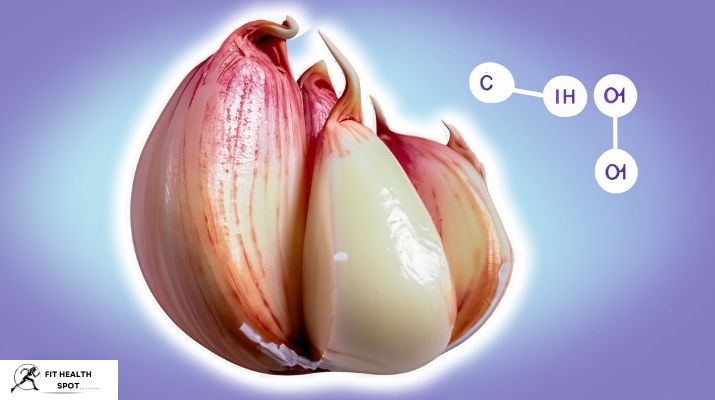
2. Protection Against Common Illnesses
Garlic’s immune-boosting qualities are nothing short of impressive. Its consumption has been linked to reduced severity and frequency of common illnesses like colds and flu. Garlic achieves this by enhancing the body’s immune response, fortifying it against pathogens.
[Reference: Clinical Nutrition]
For more immune-boosting foods, dive into the benefits of ginger, a potent natural remedy, with our guide on ginger shots benefits.
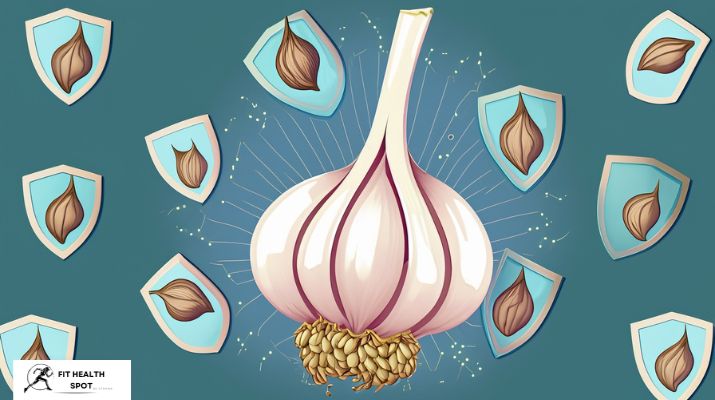
3. Blood Pressure Regulation
Hypertension, or high blood pressure, poses significant risks, including heart disease and stroke. Regular consumption of garlic, particularly in supplement form, has demonstrated the potential to reduce elevated blood pressure levels, making it a natural ally in cardiovascular health.
[Reference: Journal of Clinical Hypertension]
Green tea is another natural remedy celebrated for its cardiovascular benefits. Explore this connection further with our deep dive into green tea shots.
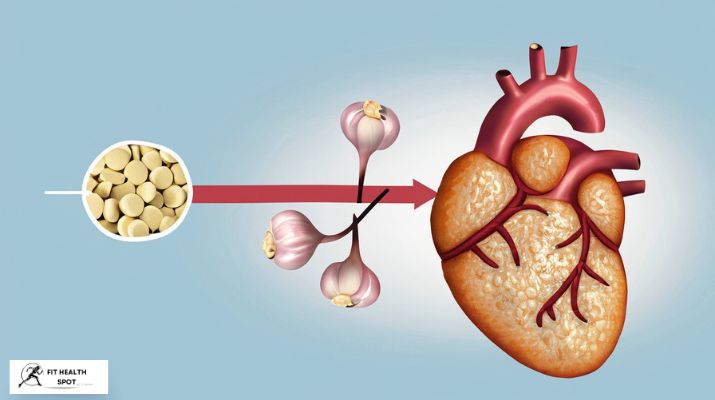
4. Improvement of Cholesterol Levels
Elevated LDL (bad cholesterol) levels are a known risk factor for heart disease. Consuming garlic regularly has shown promising results in lowering LDL cholesterol without significantly affecting HDL (good cholesterol). The compounds in garlic inhibit cholesterol synthesis, assisting in maintaining heart health.
[Reference: Journal of Nutrition]
To understand the importance of maintaining healthy cholesterol levels and how various foods play a role, read our comprehensive guide on lima beans health benefits, another cholesterol-friendly food.

5. Antioxidants to Prevent Neurological Diseases
Garlic is abundant in antioxidants, which combat oxidative stress, a contributor to aging processes and many diseases, including neurological ones like Alzheimer’s and dementia. Regular intake of garlic boosts the body’s supply of these protective antioxidants.
[Reference: Journal of Neurological Sciences]
Exploring other foods rich in antioxidants? Dive into our detailed analysis of green olives and their varieties.

6. Longevity Benefits
While it’s challenging to pinpoint one specific factor for longevity, the collective health benefits of garlic – from heart health to immune boosting – might contribute to increased lifespan. Numerous cultures have long cherished garlic for its health-promoting properties, and while definitive human studies are limited, the benefits observed provide strong arguments for garlic’s potential role in longevity.
[Reference: Journal of Gerontology and Biological Sciences]
Interested in other practices that promote longevity? Discover the ancient practice and modern science behind intermittent and dry fasting.

7. Athletic Performance Enhancement
Historically, garlic was given to Olympic athletes in ancient Greece, hinting at its potential benefits for enhancing Performance. Modern studies indicate that garlic can reduce peak heart rate and enhance exercise capacity, making it a natural choice for those aiming to optimize their athletic Performance.
[Reference: Journal of Sports Science & Medicine]
For those keen on exploring other performance-enhancing foods, our smoked salmon guide offers insights into the benefits of this nutrient-rich seafood.

8. Detoxification of Heavy Metals
Some constituents found in garlic have shown the capacity to shield organs from the harmful impacts of accumulating heavy metals. In clinical studies, garlic has been shown to significantly reduce lead levels in the blood, highlighting its potential as a protective agent against heavy metal toxicity.
[Reference: Basic & Clinical Pharmacology & Toxicology]
If you’re exploring foods that assist in detoxification, our article on buckwheat flour provides insights into another detox-friendly ingredient.
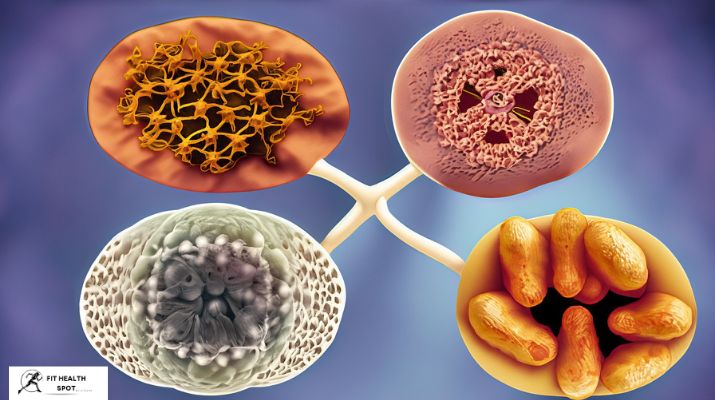
9. Improvement of Bone Health Research
Indicates that garlic might benefit bone health by increasing estrogen levels in females, potentially helping reduce bone loss. Incorporating garlic into a regular diet can be a proactive step towards ensuring robust bone health.
[Reference: Journal of Bone and Mineral Research]
For more on bone health and nutrients that aid it, delve into the wide-ranging benefits of oat bran.
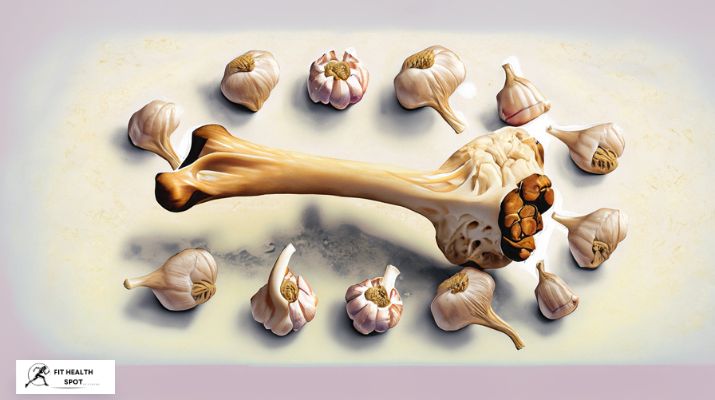
10. Garlic’s Flavorful Culinary Uses
Beyond its health benefits, garlic is a culinary gem, adored for the depth of flavor it adds to dishes. From simple sautés to complex sauces, the versatility of garlic in cooking is unmatched.
Those with a penchant for culinary explorations might also appreciate the versatility and health benefits of cavatappi pasta.
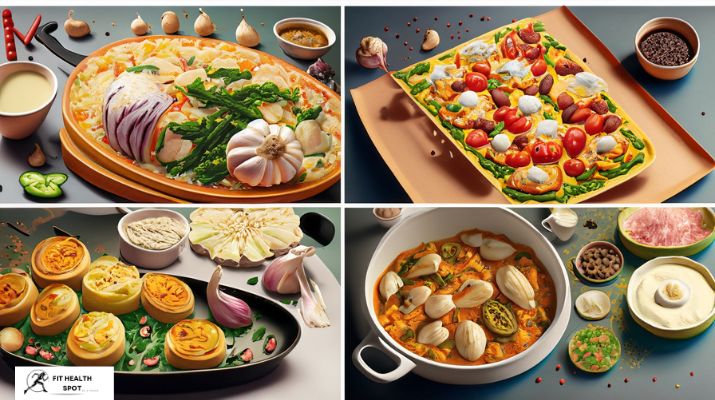
11. Garlic and Skin Health
While more commonly recognized for its internal health benefits, garlic also plays a role in skin health. Its antimicrobial and anti-inflammatory properties can be beneficial in treating certain skin conditions and enhancing overall skin health.
[Reference: Journal of Dermatological Sciences]

12. Strengthening of the Immune System
A robust immune system is vital in defending the body against diseases and infections. Garlic, rich in compounds like allicin and vitamins, has immune-boosting properties.Studies indicate that incorporating garlic into your regular diet can be effective in averting and mitigating the intensity of typical ailments such as the flu and colds.
[Reference: Journal of Immunology Research]
To gain a deeper and more thorough comprehension of how diet impacts immunity, learn about the myriad benefits of lima beans, another superfood for bolstering immunity.

Garlic’s Culinary Prowess: More Than Just a Flavor Enhancer
Garlic has graced global cuisines for millennia, effortlessly weaving its magic into dishes and transcending mere flavor enhancement. Its intense aroma and distinctive flavor have earned garlic a prime spot in the affections of both chefs and home cooks, whether they’re using it to create a rich Italian garlic-infused oil drizzle, add a fiery kick to Asian stir-fries, or impart a subtle undertone to French soups. Garlic’s culinary versatility knows no bounds.
Moreover, its ability to blend with other ingredients, mellowing when roasted or becoming pronounced when raw, reveals the intricate nature of its culinary character. Garlic isn’t just an ingredient; it’s an experience that evolves based on preparation and combination.
Similar to garlic, smoked salmon has its unique culinary journey. Dive into our comprehensive guide on smoked salmon to further explore another food with a rich culinary tapestry.
Art and Science Behind Preparing Garlic
Unwrapping the secrets of garlic requires understanding both the art and science behind its preparation. While mincing, crushing, and chopping might seem like simple tasks, they have profound effects on garlic’s flavor profile.
- Crushing: Using a garlic press or mortar and pestle releases more of the garlic’s juices, leading to a more potent flavor. This method is ideal for dressings and marinades where a pronounced garlic taste is desired.
- Chopping: This method yields a milder taste, suitable for sautés and stir-fries, allowing garlic to release its flavors gradually as it cooks.
- Roasting: Whole roasted garlic cloves turn creamy and sweet, almost caramelized. They can be spread on toast, added to sauces, or eaten as is for a mellow garlic experience.
- Raw: Thinly sliced or minced raw garlic has an intense, sharp taste, often used in salads, salsas, and certain traditional dishes.
As you delve deeper into culinary arts, recognizing these nuances in ingredient preparation can elevate your dishes, making the difference between good and exceptional.
Substituting Garlic: When Fresh Isn’t at Hand
We’ve all been there – in the middle of preparing a meal, only to realize we’re out of fresh garlic cloves. While nothing can truly replicate the exact taste of fresh garlic, several alternatives come close to capturing its essence. Here’s how you can save the day:
- Garlic Powder: Garlic powder, a more potent iteration of garlic, is crafted by dehydrating garlic cloves. It serves as a superb replacement in dishes where the consistency of fresh garlic is not essential. Swap out one fresh clove with 1/8 teaspoon of garlic powder.
- Minced Garlic in Jars: Preserved in water or oil, this can be a handy substitute. One-half teaspoon typically equates to one fresh clove.
- Garlic Salt: It’s a mix of garlic powder and salt. However, remember to adjust the salt content in your recipe. Use half a teaspoon of garlic salt for one garlic clove, but reduce the recipe’s salt by a quarter teaspoon.
- Garlic Flakes: Dried and dehydrated slices of garlic can be rehydrated or added directly to liquid-based dishes like soups. Use them in a 1:1 ratio with fresh garlic cloves.
While garlic holds a distinct flavor, other intriguing ingredients can transform a dish. Looking for a crunchy alternative in your recipes? Discover the world of corn nuts.
Embark on a Culinary Journey with Garlic-Centric Recipes
Garlic has seamlessly found its way into various global cuisines, not just as a flavor enhancer but as the star ingredient. Whether it’s the timeless garlic bread, the rich garlic butter shrimp, or the creamy garlic mushroom sauce, the possibilities are boundless.
- Garlic Soup: A comforting bowl of garlic soup, especially when infused with herbs, can be a warm delight on cold evenings.
- Garlic Herb Roasted Chicken: The blend of garlic and herbs, when roasted to perfection, lends an aromatic and flavorful touch to the chicken.
- Spaghetti Aglio e Olio: A classic Italian dish where garlic (aglio) is sautéed in olive oil (olio) and then tossed with spaghetti. Top it off with chili flakes and fresh parsley.
- Garlic Butter Roasted Vegetables: An assortment of veggies like carrots, beans, and bell peppers roasted with garlic butter, making it a delectable side dish.
For those who appreciate the intricate blend of flavors in their meals, pairing garlic with cavatappi pasta can result in a delightful concoction. Explore this combination further and check out its health benefits and recipes here.
Conclusion
Garlic, with its rich history, numerous health benefits, and culinary versatility, undoubtedly stands as a cornerstone in both the health and culinary worlds. From ancient civilizations valuing it for its medicinal properties to modern kitchens celebrating it for its unique flavor, garlic continues to be an ingredient that binds cultures and generations.
Moreover, understanding the essence of ingredients and foods is just one facet of a holistic health and wellness journey. Beyond the realm of kitchen staples, diving deeper into specific diet patterns can amplify the benefits one derives from their food choices. An excellent avenue to explore next would be the transformative world of intermittent and dry fasting, known to rejuvenate the body and mind.
Recommended Reading
For those enthusiastic about diving deeper into the world of health and nutrition, here are some handpicked articles that will satiate your curiosity:
- Olives, Beyond the Salad: Dive into the world of green olives. Discover the various varieties and understand the health benefits they bring to the table.
- A Flour with a Twist: If you’re keen on exploring healthier alternatives in baking or cooking, you might want to consider buckwheat flour. A gluten-free powerhouse, it’s packed with nutrients and offers a unique, earthy flavor.
- Other Suggested Readings: Extend your knowledge with more articles from our platform, each piece meticulously crafted to provide comprehensive insights on diverse health topics.
Thank you for journeying with us through the world of garlic cloves. Here’s to making informed choices, one clove at a time!
Frequently Asked Questions (FAQs)
What are the health benefits of eating garlic cloves?
Garlic cloves are renowned for their medicinal properties. They are known to bolster the immune system, regulate blood pressure, reduce cholesterol levels, and offer antioxidant benefits. Consuming garlic can also aid in detoxifying heavy metals in the body, promote bone health, and potentially help in conditions like Alzheimer’s disease.
How many garlic cloves can you eat in a day?
For most people, consuming 2-4 cloves of garlic daily is considered safe and beneficial. However, the ideal intake might vary based on individual health conditions and tolerances. Consulting with a healthcare professional prior to making significant changes to your dietary habits is always advisable.
Can garlic help in weight loss?
While garlic is not a miracle weight loss food, it can complement a balanced diet and exercise regimen. Garlic has been found to boost metabolism, and its anti-inflammatory properties might aid weight management. Including garlic in a holistic approach to weight loss can be beneficial.
Is it safe to eat raw garlic cloves?
Yes, eating raw garlic is safe for most individuals. In fact, raw garlic retains more of its natural nutrients and beneficial compounds compared to cooked garlic. However, it’s essential to ensure that the garlic is fresh and free from mold. Some people might experience digestive discomfort after consuming raw garlic, so it’s essential to pay attention to how your body reacts.
What is the difference between a garlic bulb and a garlic clove?
A garlic bulb refers to the whole garlic, which is made up of multiple segments. Each segment is called a clove. A typical garlic bulb can contain anywhere from 10 to 20 cloves, depending on its size and variety.
